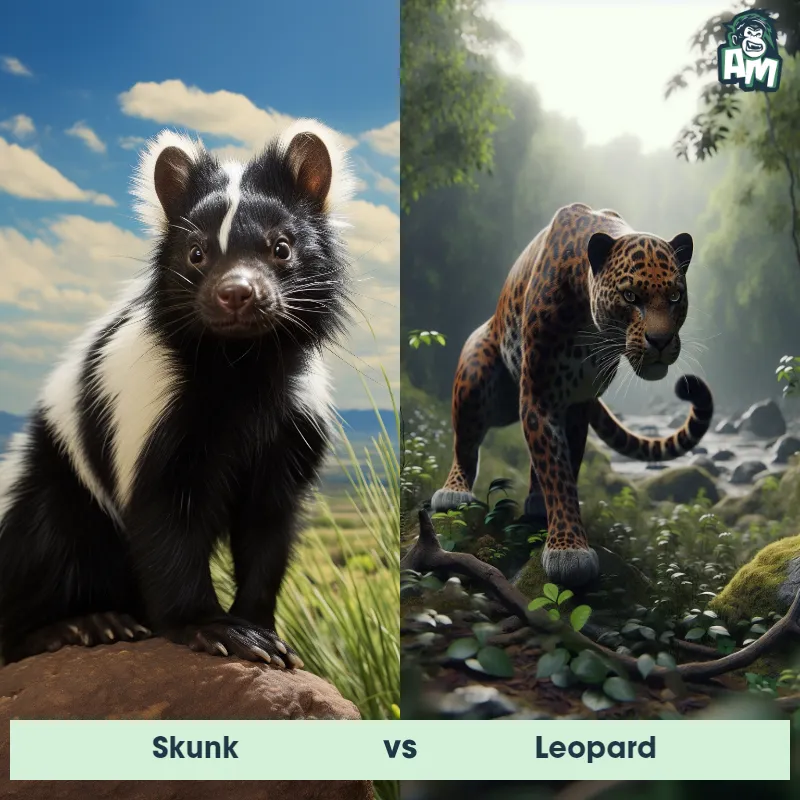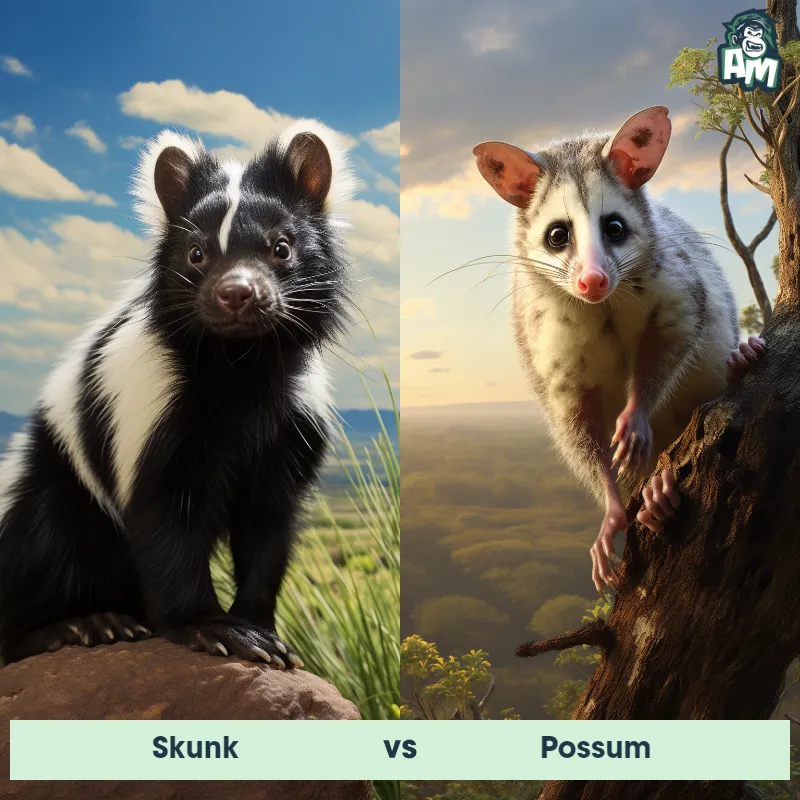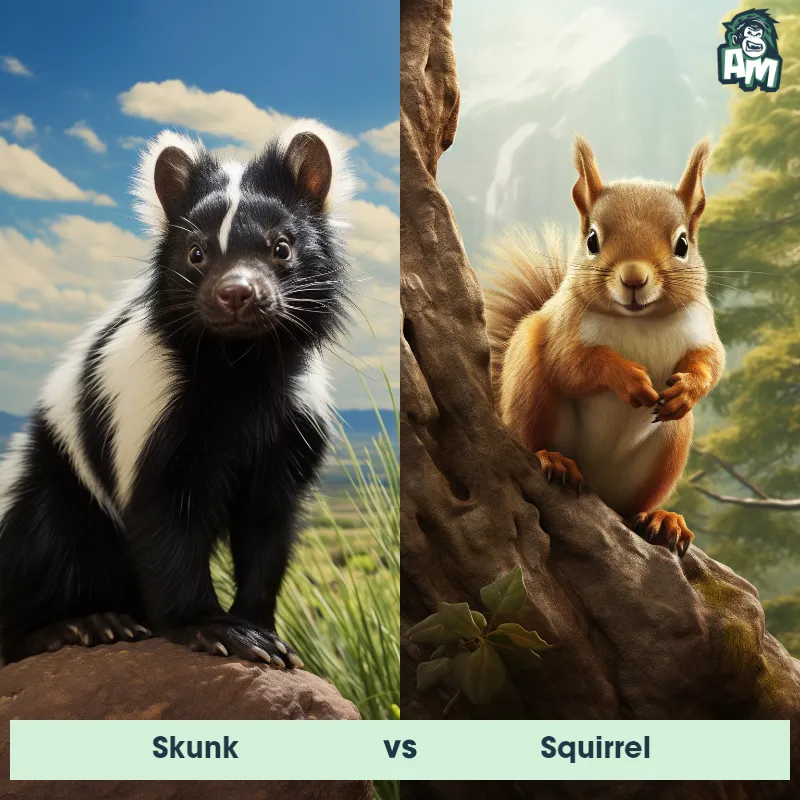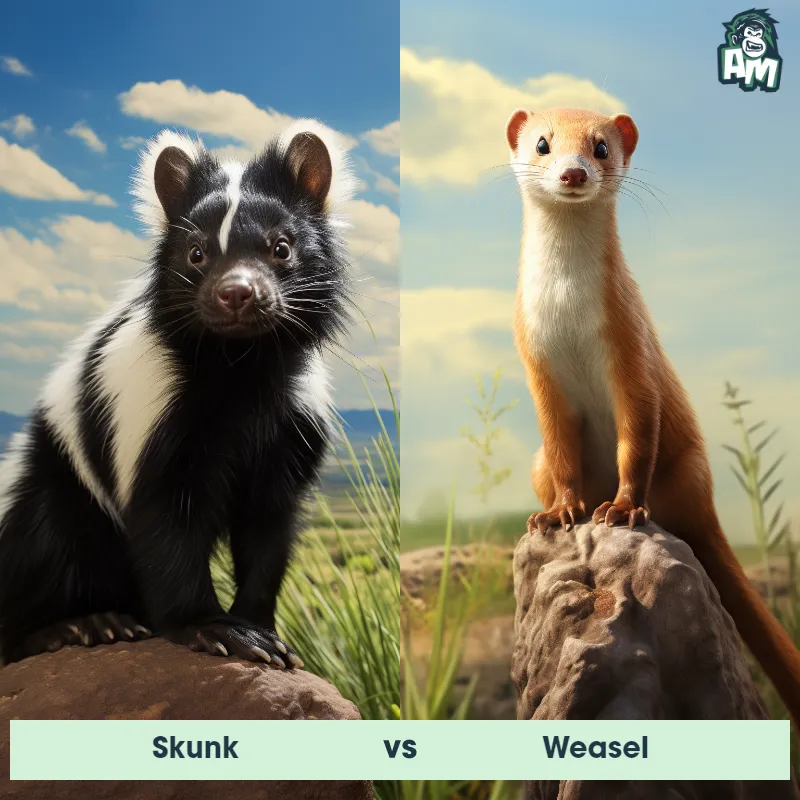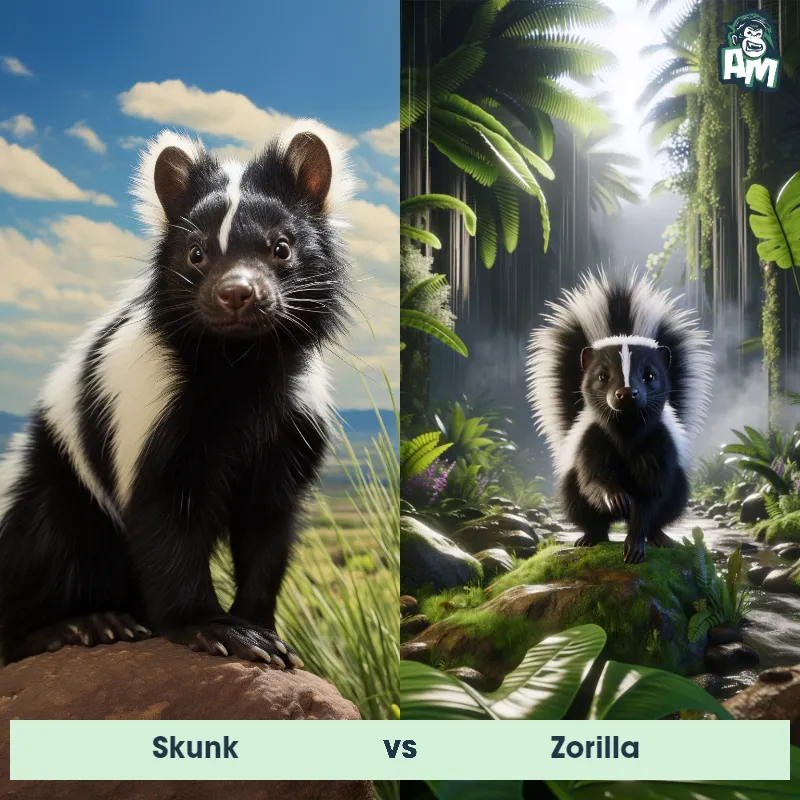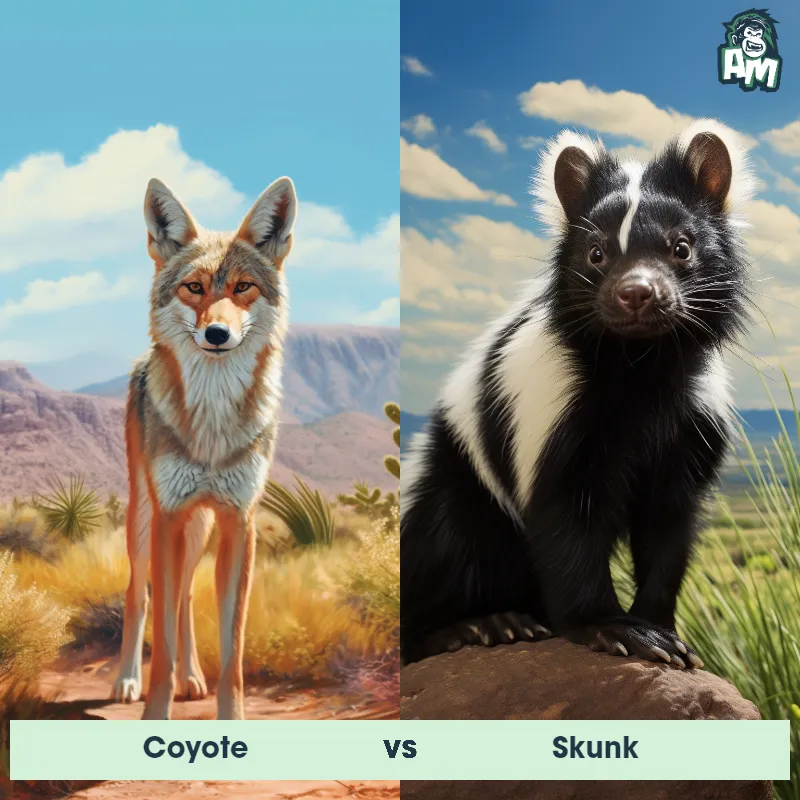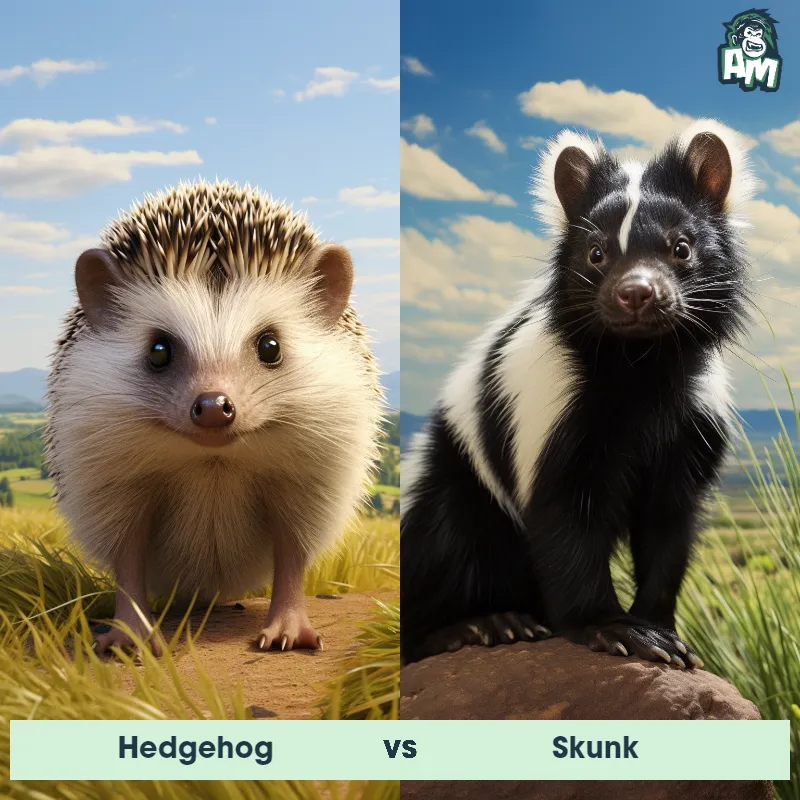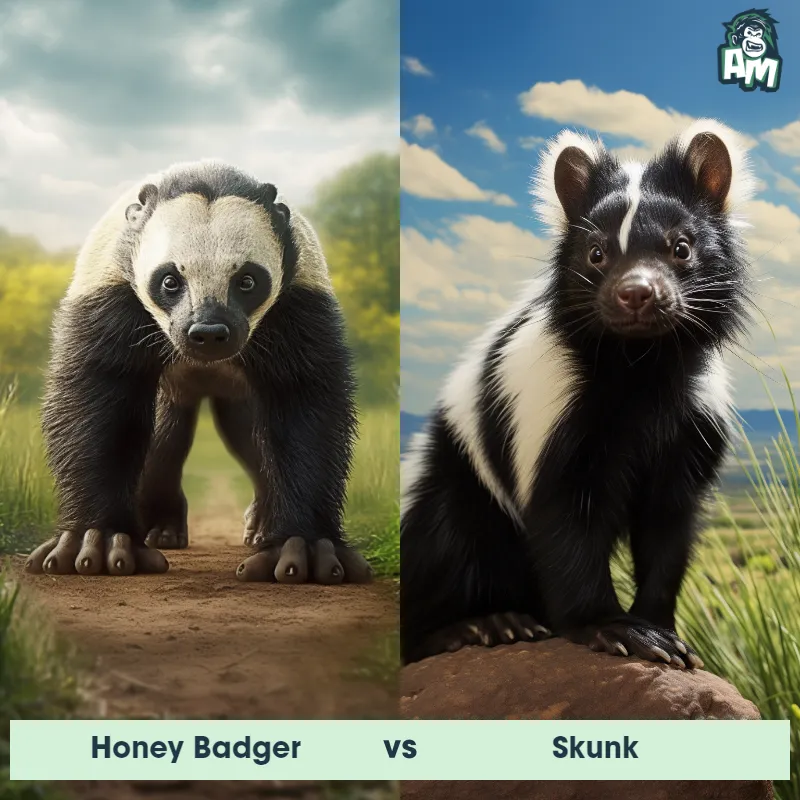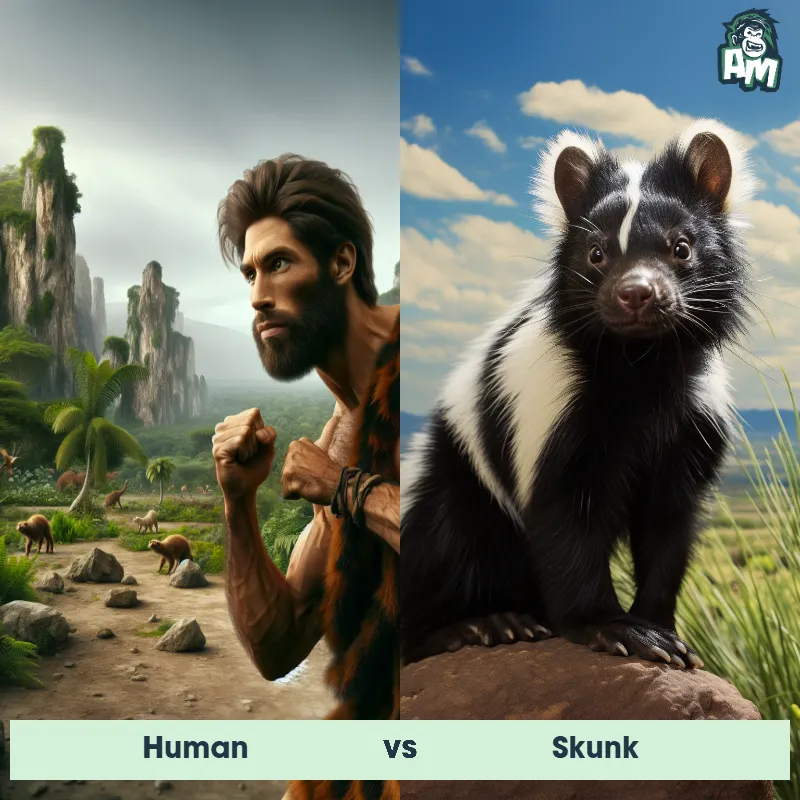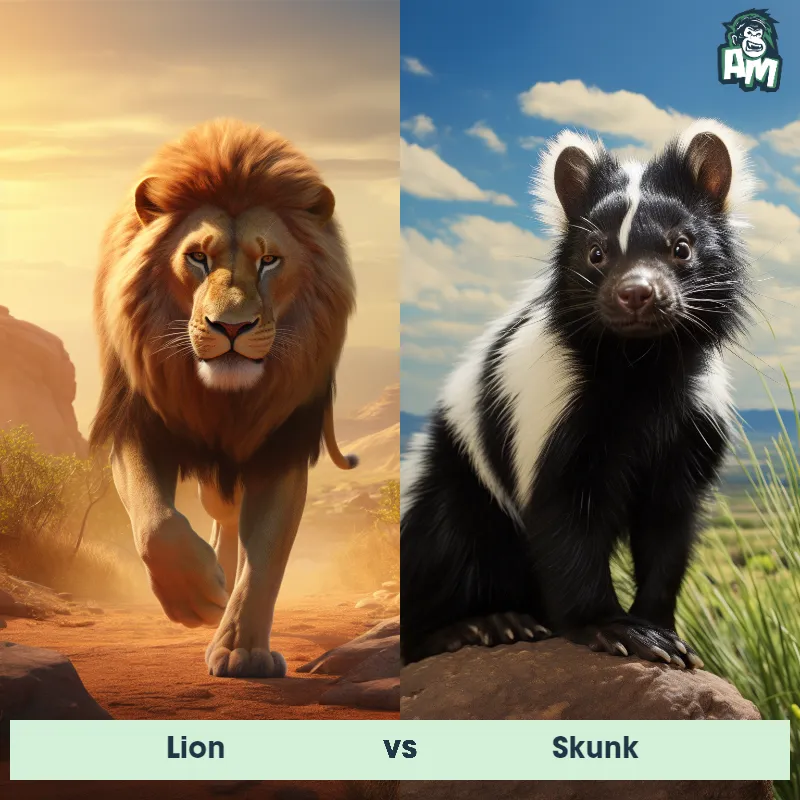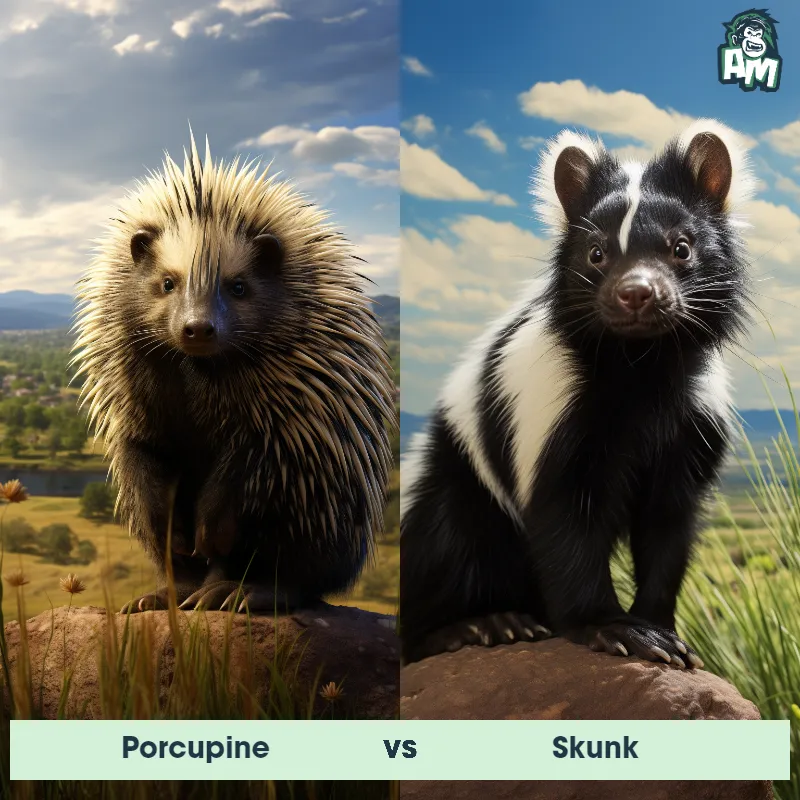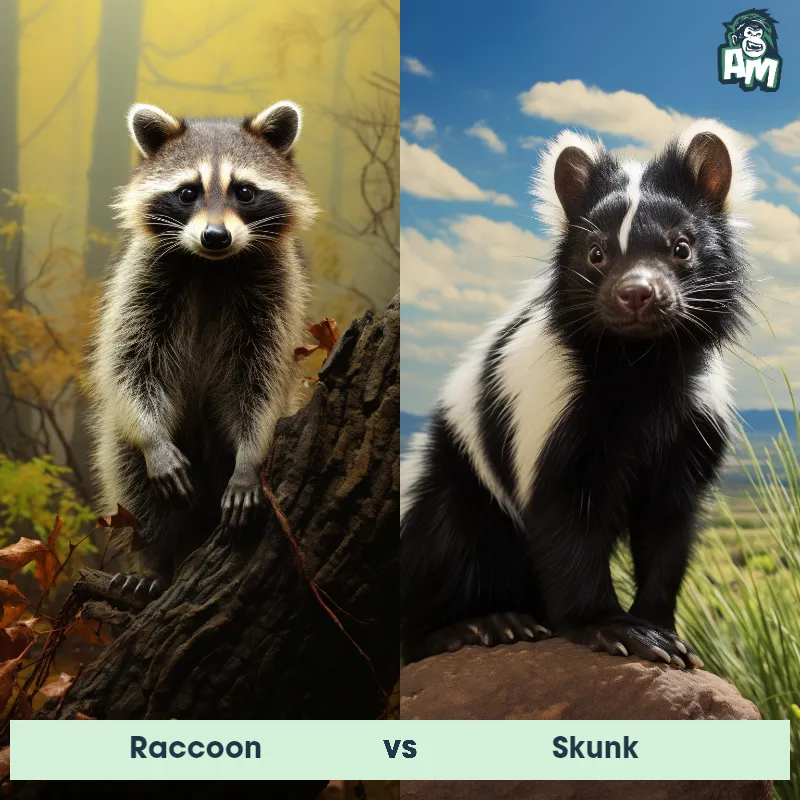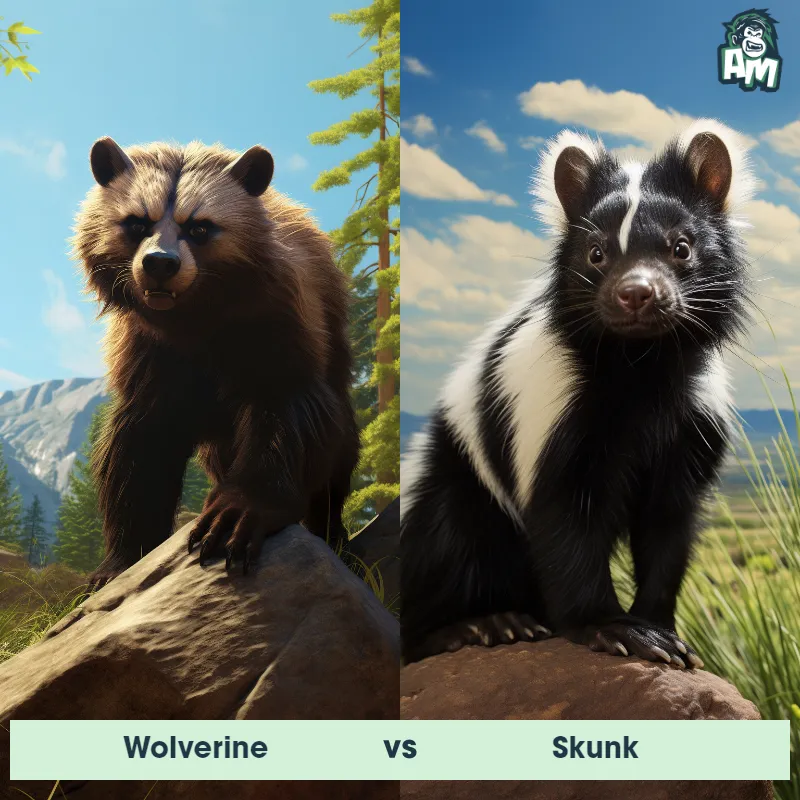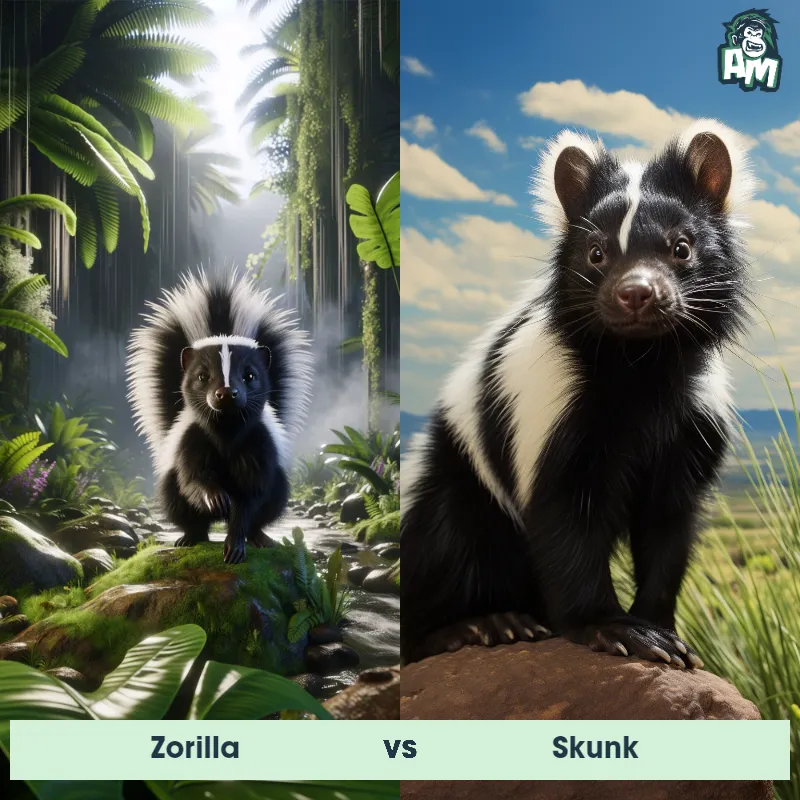The Skunk
The Skunk, commonly known for its pungent odor, is a small mammal found in various parts of North and South America. It is famous for its black and white fur, characterized by a striped pattern. Skunks have a stocky build with short legs and long claws, enabling them to dig burrows easily. They have a small head with a pointed snout, rounded ears, and small eyes. Skunks are known for their defensive mechanism, which involves emitting a highly strong-smelling spray from their anal glands when threatened.
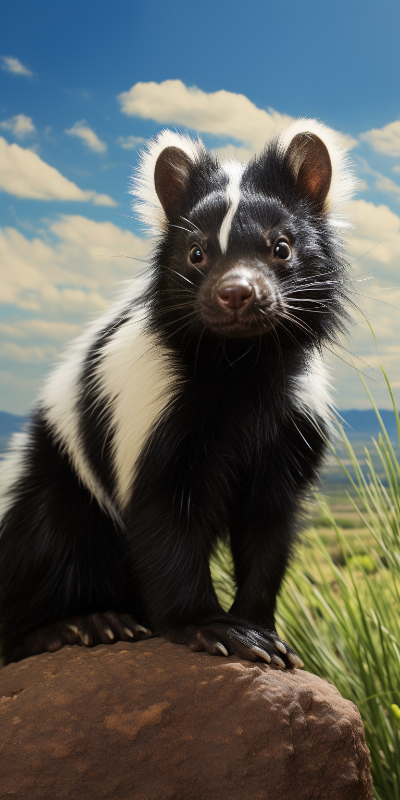
| Skunk | |
|---|---|
| Size | 8-19 inches (20-48 cm) |
| Weight | 1.1-14 lbs (0.5-6.3 kg) |
| Speed | 10mph (16km/h) |
| Key Strength | Ability to spray a pungent odor |
| Biggest Weakness | Limited spray range (up to 10 feet) |
| Scientific Name | Mephitidae |
| Family | Carnivora |
| Habitat | Forests, grasslands, and suburban areas |
| Geography | North and South America |
| Diet | Omnivorous (insects, small rodents, fruits, and plants) |
| Lifespan | 2 years - 10 years |

The Skunk
The Skunk, commonly known for its pungent odor, is a small mammal found in various parts of North and South America. It is famous for its black and white fur, characterized by a striped pattern. Skunks have a stocky build with short legs and long claws, enabling them to dig burrows easily. They have a small head with a pointed snout, rounded ears, and small eyes. Skunks are known for their defensive mechanism, which involves emitting a highly strong-smelling spray from their anal glands when threatened.
Fun Fact: Skunks are known for their excellent digging abilities and can dig burrows that are up to 6 feet long and 2-3 feet deep.
| Skunk | |
|---|---|
| Size | 8-19 inches (20-48 cm) |
| Weight | 1.1-14 lbs (0.5-6.3 kg) |
| Speed | 10mph (16km/h) |
| Key Strength | Ability to spray a pungent odor |
| Biggest Weakness | Limited spray range (up to 10 feet) |
| Scientific Name | Mephitidae |
| Family | Carnivora |
| Habitat | Forests, grasslands, and suburban areas |
| Geography | North and South America |
| Diet | Omnivorous (insects, small rodents, fruits, and plants) |
| Lifespan | 2 years - 10 years |
Skunk Matchups
We use AI to simulate matchups between the Skunk and other animals. Our simulation considers size, strength, and natural predatory behaviors to determine the most likely outcome.
Skunk: Diet, Predators, Aggression, and Defensive Behaviors
What do Skunks eat?
Skunks are omnivores and have a varied diet. They primarily feed on insects such as beetles, grasshoppers, and crickets. They also consume small rodents, bird eggs, fruits, and vegetables. In urban areas, skunks may scavenge for food in garbage cans or compost piles.
Do Skunks have any predators?
Skunks have several natural predators, including coyotes, foxes, bobcats, and great horned owls. Predators such as these have developed strategies to overcome the skunk's defensive spray by attacking them swiftly or from a distance to avoid being sprayed.
Are Skunks aggressive?
Skunks are generally not aggressive animals and prefer to avoid confrontation. They will warn potential threats by stomping their feet, growling, or raising their tail before resorting to spraying as a last resort. However, if cornered or provoked, they may bite or scratch in self-defense.
Do Skunks fight amongst themselves?
Skunks are solitary animals and typically only come together during the mating season. While they may interact non-aggressively during this time, they are not known to engage in physical fights with each other.
How do Skunks defend themselves?
Skunks have a distinctive defense mechanism: a foul-smelling spray emitted from glands near their anus. This spray contains sulfur compounds that can cause irritation and temporary blindness. Skunks can accurately spray their target up to 15 feet away, and the smell can linger for days.
What is the Skunk's biggest weakness in a fight?
While skunks have a formidable defense mechanism with their spray, they are relatively slow-moving and have poor eyesight. This makes them vulnerable to predators that can outmaneuver them or attack quickly before the skunk can spray. Additionally, their spray is a finite resource that takes time to replenish, leaving them vulnerable after using it.
Fun Fact: Contrary to popular belief, Skunks do not spray their odor indiscriminately. They give warning signs before spraying, such as stomping their feet, hissing, or raising their tail.
Fun Fact: Skunks have poor eyesight and rely heavily on their sense of smell to navigate and find food. However, they have exceptional hearing and can detect low-frequency sounds, which helps them locate prey and avoid predators.



